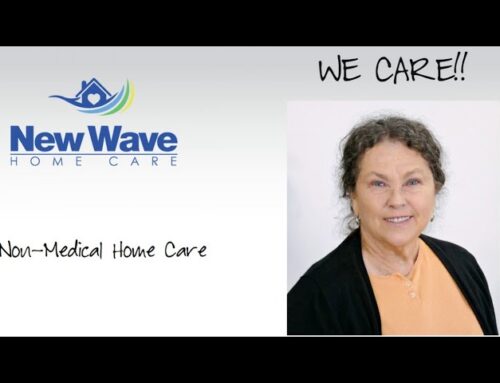
In a recent post regarding our environmental activism, we briefly touched on VOCs (Volatile Organic Compounds) and their potential health risks. VOCs are found in a wide variety of household items and have daunting names, such as dichlorobenzene, toluene, xylene, and the ever-popular formaldehyde. We also mentioned that the cumulative effects of increasing chemical levels in society, but in truth, very little is known in that regard, since all tests have been performed on single chemicals. However, just because we can’t measure something, doesn’t mean it doesn’t exist, and more importantly, chemicals, or VOCs, don’t cancel each other out. Because VOC toxicity varies for each individual chemical, there is no federal health-based standard for multiple VOCs
Why are organic emissions called volatile?
The reason they are called “volatile” is not that they burst into flames, but rather due to a low boiling point, they evaporate when exposed to air. It’s important to understand the definition of “evaporate” as applied to chemical compounds. In everyday speech, we equate evaporation with disappearing. However, when a chemical compound evaporates, that means that it’s released into the atmosphere as a vapor or gas and remains with us until it ultimately dissipates. VOCs are both man-made and found in nature.
Who’s at risk from VOCs?
Basically, everyone. However, those with respiratory problems such as asthma, young children, and the elderly may be more susceptible to irritation and illness from VOCs. Another issue to contend with is that VOCs can mimic or mask the symptoms of more serious illness and vice versa. It follows that if you are experiencing symptoms, such as dizziness; eye, nose, and throat irritation; forgetfulness; frequent headaches; or nausea, they could be caused by VOCs, which can also damage the liver, kidney, and central nervous system.
However, many of these symptoms are shared with degenerative diseases, such as Alzheimer’s or Lewy Body dementia. The best thing to do is to cover all your bases. Reduce VOCs in your home and consult a physician, especially if such symptoms continue once you’ve reduced possible exposure to VOCs.
Ten most common VOCs and alternatives:
• Ethanol is found in glass cleaners and dishwasher and laundry detergents. When using an ethanol-based cleaning product indoors, open windows or create an effective air-filtration system that will absorb the chemicals.
• Acetone is found in nail polish remover, furniture polish, and wallpaper. The alternative is acetone-free nail-polish remover, which along with the air you breathe, is actually healthier for your nails. Using products with a different solvent (such as alcohol) are important steps to a VOC-free environment. In the case of furniture polish, there are several water-based substitutes that do the job.
• Terpenes are VOCs found in fragrant products such as soap or laundry detergents. By way of alternative, there are a number of natural and citrus-based products that can be substituted for scented soaps or detergents that emit terpenes.
• Benzene is found in paint, glue, carpeting, and emissions from gasoline combustion. While fresh air is the only help for gasoline emissions, benzene-free paint and glue are widely available.
• Formaldehyde is not just for preserving frogs for biology class. It’s used in floor lacquers and certain molded plastics. To reduce or eliminate formaldehyde, there are a variety of water-based polyurethane finishes that are effective and low in toxicity, as well as natural plant-chemistry-based floor finishes. Plastics emit VOCs into the air or water. To be truly safe, exclude as much plastic as possible from your daily life. If you must use plastics, BPA-free plastics (bisphenol A) are safest.
• Carbon disulfide is found in chlorinated tap water. The best way to avoid it, assuming you drink tap water, is a charcoal or carbon-filtration system.
• Dichlorobenzene is a VOC emitted by mothballs and deodorizers. To store off-season clothes, use cedar chips, air-tight containers, or garment bags instead. The scent of lavender also helps keep moths away.
• Butanal (also known as Butyraldehyde; n-Butanal) is produced by emissions from barbecues, burning candles, stoves, and cigarettes, so yet another reason to quit smoking and avoiding second-hand smoke. Stoves containing butanal are mainly for camping or outdoors, which allows fresh air to mitigate butanal emissions. Using them indoors defeats their purpose and your health. If you like to burn candles, beeswax, soy-based, and cotton-wicked candles are safest.
• Toluene is found in paint, which is released even after the paint has dried. If you plan on painting rooms in your home, check to see whether the paint contains toluene. If so, open windows to circulate through the room. Paint any furniture or DIY projects outside or in the garage (with the door open) to prevent emitting harmful VOCs. Chronic toluene exposures at less than 200 ppm (parts per million) have been associated with headache, fatigue, and nausea. Workers repeatedly exposed at 200 to 500 ppm have reported loss of coordination, memory loss, and loss of appetite.
• Xylene emissions occur in traffic and idling cars. In truth, it’s unavoidable when you’re in your car. To reduce exposure, keep your windows rolled up in heavy traffic and never leave your car running in the garage. If you come into contact with a product that contains xylene, it’s best to wear protective mouth and eye gear or gloves. Breathing xylene vapors in small amounts can cause headaches, dizziness, drowsiness, and nausea. With more serious exposure, xylene can cause sleepiness, stumbling, irregular heartbeat, fainting, or even death. Xylene vapors are mildly irritating to the skin, eyes, and lungs.
How to reduce the presence of VOCs
Along with being aware of product ingredients before you buy. If you do buy products with VOCs, try to gauge your purchase based on what you’ll need. If you have a cache of stored chemical products in your home, such as paints, varnishes, solvents, adhesives, and caulks, either get rid of them or store them in a garage or outdoor shed—anywhere family members don’t spend a lot of time. Remember, these products leak VOCs whether you use them or not. Check with your city or country for sites that enable you to dump hazardous waste.
Increasing the amount of fresh air in your home will help reduce the concentration of VOCs indoors. Chemicals release more VOCs in high temperatures and humidity. Keep temperature and relative humidity as low as possible while maintaining comfort.
Plants that absorb VOCs
If increasing outdoor ventilation is not an option, there are plants that will scrub your home atmosphere of VOCs—and look good while they’re doing it. Varieties of climbing and non-climbing philodendrons can absorb formaldehyde. Chinese evergreens have beautiful silver leaves with green spots and absorb many airborne contaminants, including formaldehyde and xylene. Chrysanthemums can absorb benzene and other VOCs from paint. As you can see from the list above, the VOCs from a wide range of products can be reduced with a solution that only nature can provide—all the more reason to protect our environment.
At New Wave Home Care, we feel that in order to maintain an environment more conducive to good health, it’s essential to reduce all VOC-producing substances. For more information, go to South Coast Air Quality Management District in California , and the California Air Resources Board (ARB)



